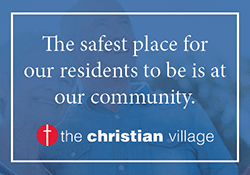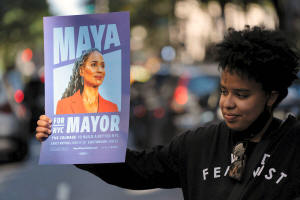Factbox-What you need to know about New York City's mayoral contest
 Send a link to a friend
Send a link to a friend
 [June 22, 2021]
By Joseph Ax [June 22, 2021]
By Joseph Ax
NEW YORK (Reuters) - Tuesday's primary
election for New York City mayor could be the most momentous in a
generation, as the Big Apple struggles to emerge from a devastating
pandemic. Here's what you need to know:
HIGH STAKES
The most populous U.S. city is recovering from a coronavirus pandemic
that killed more than 30,000 residents and infected nearly one million,
but stark challenges remain. It suffers from economic inequality, a lack
of affordable housing, a growing homelessness problem and effectively
segregated schools.
Meanwhile, a wave of shootings has put public safety at the core of the
campaign. The election's outcome could offer fresh evidence of how the
Democratic Party is navigating the thorny issue of combating crime, a
year after nationwide protests over police brutality gave rise to calls
of "defund the police" from many progressive voices.

FLUID RACE
The race has been fluid, with as many as eight out of 13 Democratic
candidates seen as viable and polling data in relatively short supply.
Brooklyn Borough President Eric Adams, a former police captain, appears
to be the front-runner. But civil rights attorney Maya Wiley, former
presidential candidate Andrew Yang and former sanitation chief Kathryn
Garcia are all within striking distance in public surveys.
The winner of the Democratic primary in all likelihood will prevail in
November's general election. Democratic voters outnumber Republicans by
more than six to one, and the Republican candidates vying for their
party's nod on Tuesday are not considered a threat to the Democratic
nominee.
NEW VOTING SYSTEM
Adding to the uncertainty is a new system known as ranked-choice voting,
or RCV, in which voters can rank up to five candidates in order of
preference.
[to top of second column]
|

A supporter holds a sign for New York City Mayoral hopeful Maya
Wiley at the Democratic primary debate in New York City, U.S., June
16, 2021. REUTERS/David 'Dee' Delgado/File Photo

RCV operates as a series of instant run-offs: if no candidate
exceeds 50% of the vote among first choices, the candidate in last
place is eliminated, and that person's votes are re-allocated to the
voters' second choices.
The tabulation continues, round after round, until there are two
candidates left, giving the one with the majority the victory.
WAITING GAME
Initial results showing voters' first-choice picks are expected
Tuesday night. But the final vote tally and winner may not be known
until mid-July, according to election officials.
Absentee ballots are accepted until June 29 as long as they were
postmarked by Tuesday. In addition, voters are allowed to fix any
ballot errors up until July 9.
On June 29, the city Board of Elections plans to run its first round
of ranked-choice results, which will show who would have won based
on in-person votes only.
One week later, the board will issue a second round of results that
includes all absentee ballots processed as of that day. It will
continue to do so once a week until all ballots are counted, with
final results expected the week of July 12.
(Reporting by Joseph Ax; Editing by Colleen Jenkins and Aurora
Ellis)
[© 2021 Thomson Reuters. All rights
reserved.] Copyright 2021 Reuters. All rights reserved. This material may not be published,
broadcast, rewritten or redistributed.
Thompson Reuters is solely responsible for this content.
 |